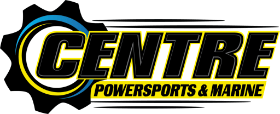Personal Watercraft Safety Tips
 Personal watercraft or PWCs are a thrilling way to spend an afternoon at the lake or river. Whether you’re on a Sea-Doo® or another style of PWC, you’re sure to have an incredible day out on the water, tearing across the surface and kicking up waves with your friends and family.
Personal watercraft or PWCs are a thrilling way to spend an afternoon at the lake or river. Whether you’re on a Sea-Doo® or another style of PWC, you’re sure to have an incredible day out on the water, tearing across the surface and kicking up waves with your friends and family.
However, users of personal watercraft need to take local laws into consideration as well as some important safety tips. Centre Powersports in Sauk Centre, Minnesota, has provided this quick guide to help you follow rules & use common sense on the water to protect yourself and everyone around you. If you still have questions, you can always come see us, and we can show you our great selection of PWCs so you can find one that’s right for you!
Inspection At Home
Before you even take your PWC out of the garage, you’ll want to inspect your watercraft for signs of wear and tear. Any hull damage will need to be repaired, and loose hose connections need tightening or replacement as well. If there’s something you’re concerned about or if you don’t feel like it’s a quick fix you can do at home, take your PWC in for service from professionals. If you’re near Sauk Centre, schedule a service appointment with Centre Powersports and we’ll carefully examine your PWC and make sure it’s ready for your upcoming waterfront adventure. Having a pro look things over can take some stress off your mind and save you time that you can then use to plan your day!
Gearing Up
True preparedness means having the correct safety gear at hand. Everyone riding a PWC in your group needs to wear a lifejacket that’s fitted to them. Whistles or horns are also necessary to alert swimmers, boaters, and other watercraft users to your high-speed presence. Carry a radio and a cell phone for emergency contact purposes, and if you can get waterproof cases for these, so much the better. If you’re stuck on the water because your Sea-Doo runs out of gas or you’re injured, you’ll need to be able to contact someone on shore for help. Carry a first-aid kit for minor injuries and bring sunscreen, too. Dewatering devices are another great item to have and you’ll want one on each watercraft.
Driving While Towing
If you’ve towed a trailer before, you’ll know that you should have a trailer and towing vehicle with a GCWR (or gross combined weight rating) that’s capable of carrying your PWC along with passengers and cargo. Going over weight limits mean possible tire blowouts, accidents, and even fines if you’re caught by law enforcement. You’ll want to secure your PWC in your trailer and balance the weight from left to right. Putting 10 to 20% of the cargo weight towards the front of your trailer will help balance it and make your towing easier, too.
When you’re driving with a trailer, stay under 65 mph and be courteous of other drivers. Give those around you the right of way and try not to pass, because your maneuverability is hampered by your trailer. You’ll need to increase your following distance behind other cars because the added weight requires more space to slow down and come to a complete stop. Take your time getting to the water and you’ll be sure to get there safely.
Safety At The Ramp
Once you’re at the ramp unloading your PWC, you’ll want to keep up that courtesy, only this time extend it to other ramp users. Everyone’s excited to get out on the water, but you’ll still need to wait your turn and give others plenty of space to safely get their craft in the water, too. When you come back in to land, continue to be patient with others and don’t try to wedge ahead in line.
Follow All Watercraft Regulations
Big engines and high speeds mean you’ll need to be responsible when handling your personal watercraft. Never use drugs or drink alcohol before operating a PWC -- you’re driving a piece of heavy machinery and it requires your full focus and attention so you can react quickly to obstacles and avoid hurting others. If your medications prohibit you from operating heavy machinery, do yourself and others a favor and stay on shore. Ensure that your watercraft is licensed appropriately for your state and display the appropriate labels. Don’t stray out on the open ocean or get so far from shore you can’t see it.
In Case of Emergencies
First of all, you should attach your watercraft’s safety lanyard to either your wrist or lifejacket before setting out to ensure the killswitch is hit if you fall off or otherwise become incapacitated. If you’re hurt, use your horn or other signalling device to indicate distress to those on shore, or call for help on your radio or phone. Wait with your watercraft’s engine turned off until help arrives.
Now you’re prepped to know what to expect and how to be safe on the water. Ready to get your adrenaline pumping by taking on the waves? Head on down to Centre Powersports to scope our selection of PWC for sale. We have several brands, including new and used Sea-Doo PWCs. Centre Powersports is located in Sauk Centre, Minnesota, additionally serving the cities of St. Cloud, Alexandria and Willmar. We proudly serve the greater Minneapolis metropolitan area, too!

